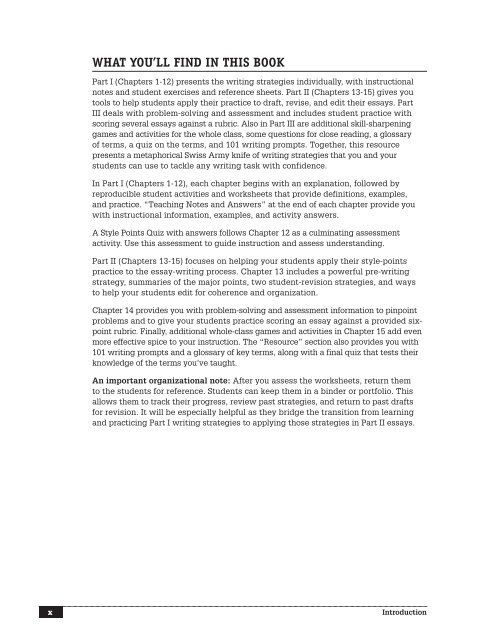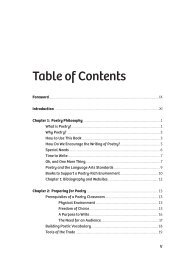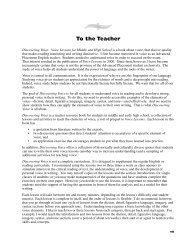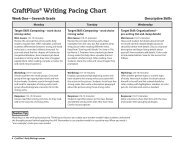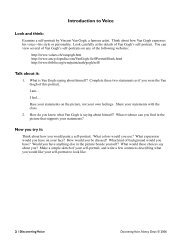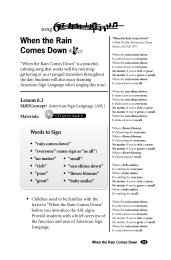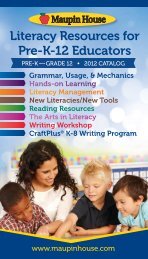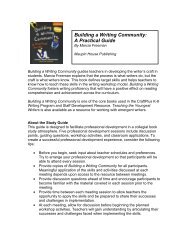INTRODUCTION - Maupin House Publishing
INTRODUCTION - Maupin House Publishing
INTRODUCTION - Maupin House Publishing
Create successful ePaper yourself
Turn your PDF publications into a flip-book with our unique Google optimized e-Paper software.
WhAT yOU’LL FIND IN ThIS BOOK<br />
Part I (Chapters 1-12) presents the writing strategies individually, with instructional<br />
notes and student exercises and reference sheets. Part II (Chapters 13-15) gives you<br />
tools to help students apply their practice to draft, revise, and edit their essays. Part<br />
III deals with problem-solving and assessment and includes student practice with<br />
scoring several essays against a rubric. Also in Part III are additional skill-sharpening<br />
games and activities for the whole class, some questions for close reading, a glossary<br />
of terms, a quiz on the terms, and 101 writing prompts. Together, this resource<br />
presents a metaphorical Swiss Army knife of writing strategies that you and your<br />
students can use to tackle any writing task with confidence.<br />
In Part I (Chapters 1-12), each chapter begins with an explanation, followed by<br />
reproducible student activities and worksheets that provide definitions, examples,<br />
and practice. “Teaching Notes and Answers” at the end of each chapter provide you<br />
with instructional information, examples, and activity answers.<br />
A Style Points Quiz with answers follows Chapter 12 as a culminating assessment<br />
activity. Use this assessment to guide instruction and assess understanding.<br />
Part II (Chapters 13-15) focuses on helping your students apply their style-points<br />
practice to the essay-writing process. Chapter 13 includes a powerful pre-writing<br />
strategy, summaries of the major points, two student-revision strategies, and ways<br />
to help your students edit for coherence and organization.<br />
Chapter 14 provides you with problem-solving and assessment information to pinpoint<br />
problems and to give your students practice scoring an essay against a provided sixpoint<br />
rubric. Finally, additional whole-class games and activities in Chapter 15 add even<br />
more effective spice to your instruction. The “Resource” section also provides you with<br />
101 writing prompts and a glossary of key terms, along with a final quiz that tests their<br />
knowledge of the terms you’ve taught.<br />
An important organizational note: After you assess the worksheets, return them<br />
to the students for reference. Students can keep them in a binder or portfolio. This<br />
allows them to track their progress, review past strategies, and return to past drafts<br />
for revision. It will be especially helpful as they bridge the transition from learning<br />
and practicing Part I writing strategies to applying those strategies in Part II essays.<br />
x Introduction


